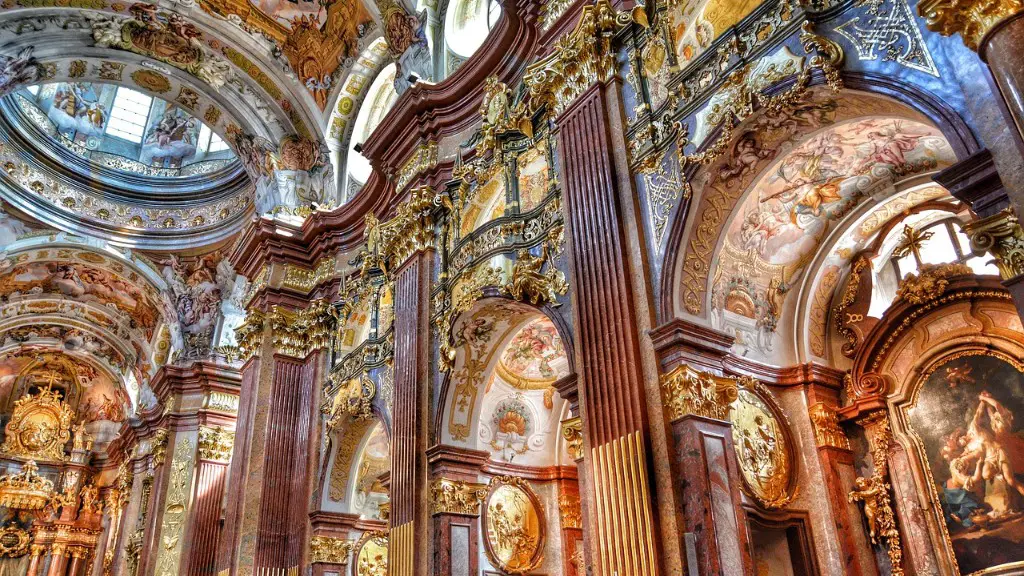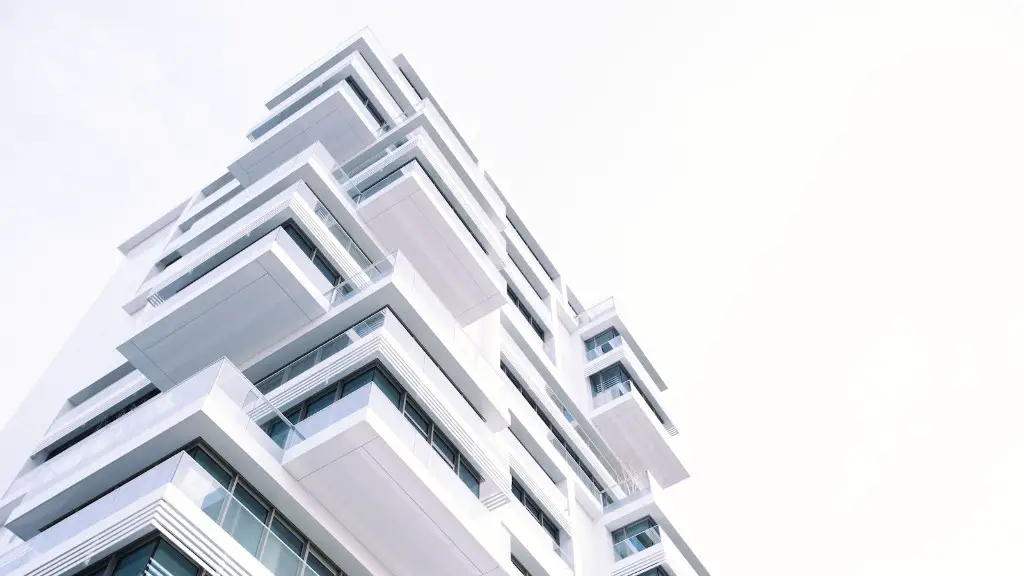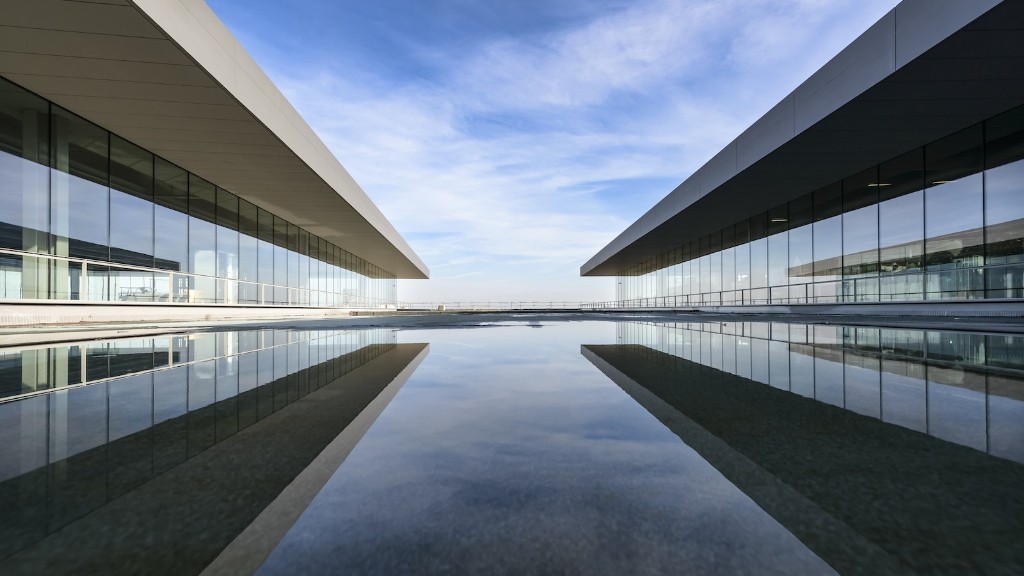How Is Economics Related To Architecture
The relationship between economics and architecture is an important one. They intersect in many ways. On one hand, economics provides the framework for deciding which projects should be built, when, and for what purpose. On the other hand, architecture provides an important visual representation of how a society functions and organizes its resources.
The economics of architecture usually focuses on the costs associated with building or designing a structure. This would include everything from land acquisition, labor, materials and equipment, to the time and resources used to construct it. Architects often use economic models to help them determine the most cost-effective design for a given project. For example, they might take into consideration the cost of a certain building materials, the availability of labor, and even the energy efficiency associated with a particular design.
In addition to the economic considerations, architecture also has an important role in social organization. Buildings, in particular prefabricated structures, can be used to segregate people in a specific way, creating class divides and cultural divides. It can also be used to highlight certain aspects of a society’s history, such as monuments that commemorate battles, wars, or leaders. Similarly, it can also be used to commemorate and celebrate achievements, such as parks and gardens.
In some cases, architecture can also be used as a tool for economic development. For instance, in urban contexts, buildings can provide a space for new businesses to set up shop and attract investors, supporting local economic growth. Similarly, in rural contexts, prefabricated structures can be used to attract tourists, creating economic benefits in the area.
Ultimately, economics and architecture have a symbiotic relationship – they reinforce each other’s importance and help shape the ways in which people live, work, and move in the world. A good architect can help a city realize its economic goals by carefully choosing materials and methods to reduce costs while facilitating growth. By focusing on energy efficiency, sustainability, and community needs, a good architect can help ensure that a city or town has the resources to thrive.
Architecture and Gentrification
Gentrification is a phenomenon that has become increasingly widespread in recent times, especially in cities. It is a process whereby wealthier individuals move into a previously lower-income neighborhood, often displacing existing residents. We can see gentrification as a form of economic restructuring, whereby developers engage in a process of “urban renewal” by constructing high-end residential and commercial buildings, thereby increasing property values and taxes, rents, and other costs associated with living in the area.
The architecture of gentrification often involves large, modern buildings with flashy designs that the affluent members of society would find attractive. These buildings serve as a visual representation of the new economic status quo in the area, and can often be seen as a sign that certain people or groups are no longer welcome.
The rise in rents and property values associated with gentrification can be devastating for existing lower-income communities. According to some studies, gentrification has been associated with higher rates of crime, increased levels of stress and depression, poorer health outcomes, and displacement of existing residents. Therefore, it is important to understand and address the economic dynamics behind gentrification in order to ensure that those in low-income communities are not further disadvantaged.
Architecture and Environmentalism
Environmentalism has increasingly become an integral part of architecture, with an emphasis on developing buildings that are more energy-efficient and sustainable. Architects are looking for ways to reduce their buildings’ carbon footprint, through the use of recycled materials and green technologies such as solar energy, wind power, and geothermal energy. Additionally, buildings can be designed in ways that reduce their need for electricity and water usage, such as installing skylights and green roofs.
By incorporating environmental concerns into architecture, architects can help to create a more sustainable and eco-friendly society. This can have significant economic implications for both individuals and communities, as green buildings are often cheaper and more efficient to maintain, leading to savings in energy costs, water bills, and the like. Additionally, it is not just the cost savings associated with green buildings that are important, but also the environmental benefits that come along with it, such as improved air and water quality, reduced carbon emissions, and an increased potential for renewable energy.
Therefore, it is clear that economics and architecture are deeply intertwined. Architects have the power to shape the economic environment of a society by designing buildings that are both economically and environmentally friendly. Architects can help communities reduce their energy costs, improve their living standards, and create jobs by creating green and efficient buildings that support a sustainable lifestyle.
Architecture and Social Issues
Architecture isn’t just a matter of aesthetics – it can also be a reflection of the social issues of a given time or place. Buildings, sculptures, monuments and other forms of architecture can tell us a lot about a culture’s values and beliefs. For instance, a monument might commemorate a leader or event that was significant to the history of that society. A sculpture might reflect the ideals of beauty and desirability. And a building might represent a particular period in time, such as a post-World War II era.
Therefore, architecture can be seen as a reflection of economics and social issues. In many cases, the architecture of a place is determined by the political, social and economic circumstances at the time. This means that if a society is undergoing significant change, the architecture of its cities and towns will reflect this shifting reality.
Likewise, economic circumstances can also affect a society’s architecture. For instance, a city experiencing an economic downturn may have fewer resources available to invest in building new structures or renovating old ones, leading to a decrease in the quality of architecture and an increase in poverty. Conversely, a city experiencing economic growth may be able to invest in new and improved infrastructure, leading to a more vibrant architecture scene.
Ultimately, by understanding the relationship between economics and architecture, we can gain a deeper understanding of the social and economic issues that shape today’s societies. Whether through buildings, sculptures, monuments, or other forms of architecture, we can gain valuable insights into how a society functions and what values guide its decisions.
Architecture and Urban Planning
Urban planners and architects often work together to create cities and towns that are both attractive and functional. Urban planning involves the coordination of multiple facets of design, such as buildings, roads, infrastructure, parks, and public spaces. Architects provide the designs for these buildings and spaces, ensuring that they are functional, aesthetically pleasing, and cost-effective.
Moreover, urban planning also takes into consideration the economic implications of a given design. For instance, when considering public transportation systems, architects and urban planners must ensure that the system is financially feasible. This means taking into account the cost of materials and labor, as well as the potential revenue generated through the usage of the system.
In addition to economic considerations, urban planners also have to take into consideration the cultural and social needs of a given area. For instance, a city center needs to attract people and businesses in order to be successful. To do this, architects must consider the needs of the local population, including the types of businesses, culture, and activities available in a given area.
Therefore, economics and urban planning often intersect in many ways. By considering both the economic and social implications of design decisions, architects and urban planners can create attractive and functional cities that meet the needs of the local population.
Architecture and Job Creation
Finally, architecture can be a powerful tool for creating jobs and boosting economic growth. Construction projects require skilled labor and the purchase of materials, both of which generate economic activity. Additionally, the architecture industry itself is an important economic driver, with architects, engineers, and other professionals providing jobs and generating income.
Furthermore, good architecture can also lead to increased tourism and investment in a given area. For instance, a well-designed building or park can attract tourists, leading to increased spending and more jobs. Similarly, businesses and investors may be more likely to move to an area that has attractive and functional architecture.
Ultimately, it is clear that economics and architecture are deeply intertwined. Good architecture can help to create jobs, attract tourists, and boost economic growth. Therefore, it is important to ensure that economic considerations are taken into account when designing buildings and other forms of architecture. By doing so, architects can play a critical role in helping cities, towns, and communities realize their economic goals.





